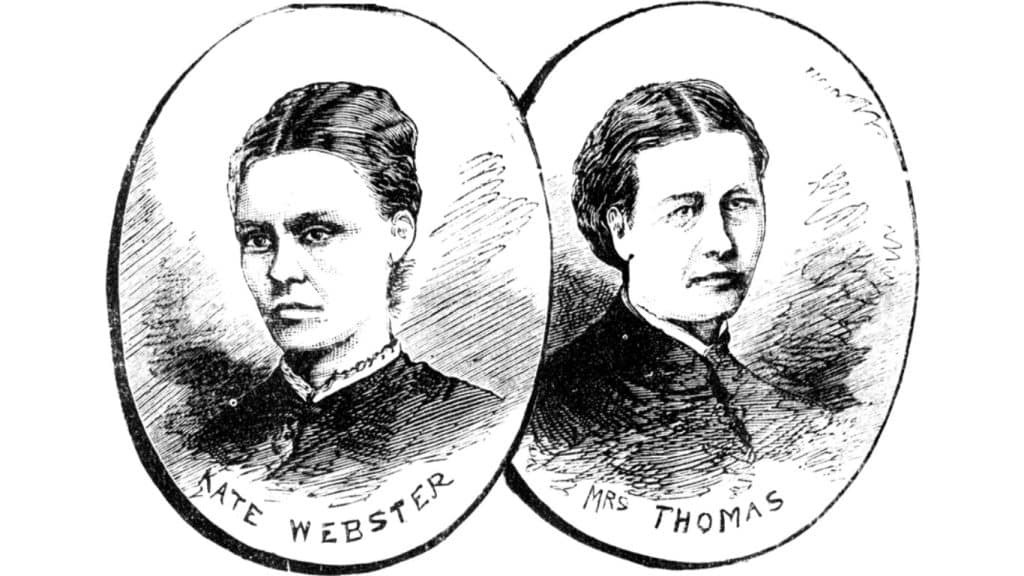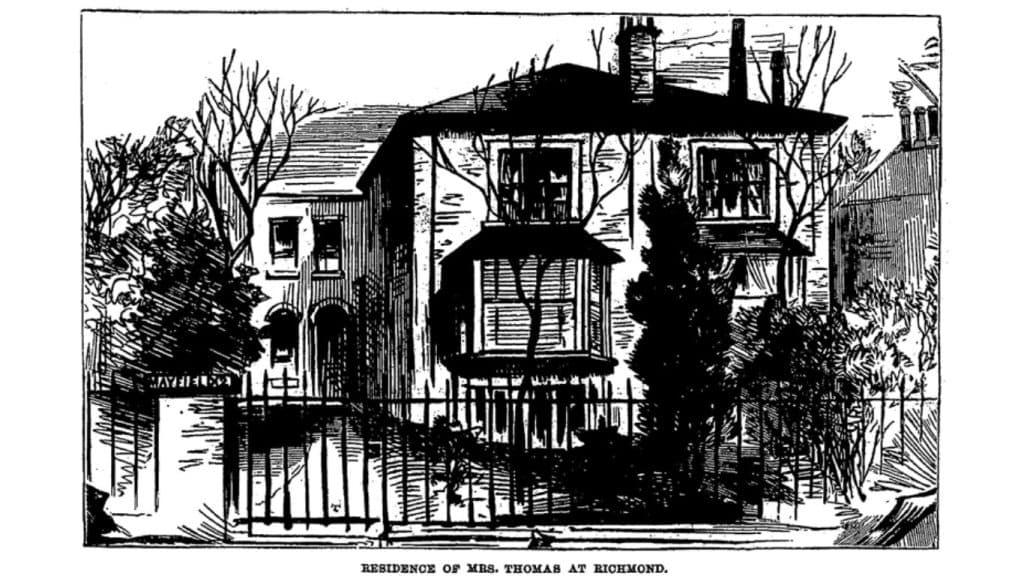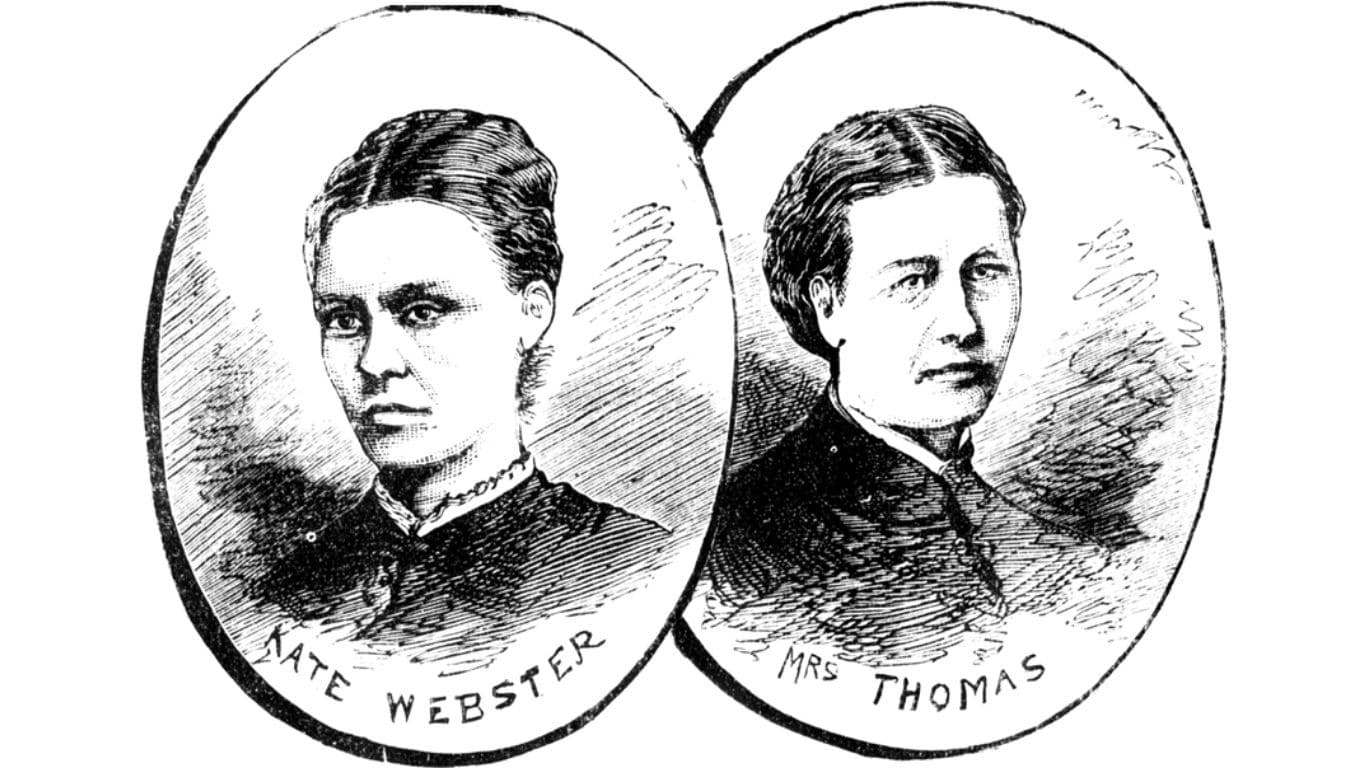In 1879, Kate Webster shocked Victorian England by murdering her Richmond employer Julia Martha Thomas, impersonating her, and leaving behind a tale as grisly as any horror film…

In the quiet streets of Richmond in 1879, a brutal murder unfolded—one that would shock Victorian Britain and earn the killer a place in true crime history.
While others went about their lives, Kate Webster, a housemaid with a history of petty crime, was killing her employer, dismembering the body, and disposing of the remains in the River Thames.
It sounds like something from a lurid Gothic novel, but every bit of it is true.
Kate, born Catherine Lawler in County Wexford, Ireland, had already served time in prison for theft and fraud. By the time she entered the service of Julia Martha Thomas – a widowed schoolteacher with a strict manner and few friends – Kate was desperate. For money, for security, and perhaps for a new identity altogether.
That desperation would soon boil over in the most horrific way.
Boiled bones, dripping fat, and a borrowed life
On the evening of Sunday 2 March 1879, Kate Webster attacked Julia at the foot of the stairs – possibly by pushing her, possibly with an axe. Once the older woman was dead, Kate dragged the body to the kitchen and began to methodically dismember it.
Some parts she boiled in a laundry copper. Others she packed into a box and threw into the River Thames at Barnes.
One of the most disturbing details – often left out of polite conversation – was that Kate kept some of Julia’s rendered fat and sold it as dripping to unsuspecting locals. A grisly bit of thrift that earned her the infamous nickname: the Female Sweeney Todd.
But the horror didn’t stop there.
Donning Julia’s black silk gowns and bonnet, Kate began posing as her victim, introducing herself to neighbours as “Mrs Thomas” and selling off her belongings. She even tried to rent out the poor woman’s home.
With unnerving confidence, she played the role in broad daylight – while the real Julia’s remains bobbed somewhere in the Thames.
Kate had help, too. A local man, Henry Porter, helped her carry the heavy box to Barnes Bridge. Whether he knew what was inside remains uncertain, but he later said he was haunted by the memory.

The gallows and a skull in the garden
The ruse didn’t last long.
When neighbours began asking questions and Julia’s disappearance couldn’t be explained, suspicion quickly turned toward her odd new “persona”.
Kate fled to County Wexford but was soon arrested and brought back to London for trial. The case became known as the Barnes Mystery, and the Victorian public lapped up every sordid detail.
At the Old Bailey, Kate showed little remorse. In fact, she was surprisingly calm and composed – described by reporters as confident, even cocky. Some said she seemed proud of the attention.
Her defence claimed it was a spur-of-the-moment act, but few believed her. The sheer level of planning, impersonation and brutality pointed to something far more chilling.
On 29 July 1879, Kate Webster was hanged at Wandsworth Prison. Her final words were, “I am sorry for what I have done.” Not nearly enough for the horror she unleashed.
But the story didn’t end there.
In 2010, more than 130 years later, workers renovating a garden in Richmond unearthed a skull – fractured and aged, buried in an old Victorian herb box. The garden belonged, quite astonishingly, to naturalist and broadcaster Sir David Attenborough.
Forensic tests confirmed what no one expected: it was the skull of Julia Martha Thomas, her final resting place found at last.
A Victorian horror that still haunts
The murder of Julia Martha Thomas stands out not just for its savagery, but for its strangeness.
Kate Webster didn’t just kill her employer. she took over her life. In an age when women were expected to be meek and modest, Kate shocked the public with her brazenness.
The Victorian obsession with women who “stepped outside their place” only added fuel to the fire, making her a media sensation.
To this day, the case remains one of Britain’s most grisly true crime tales – complete with murder, mistaken identity, and a severed head found in a national treasure’s garden.
It’s no wonder the tale of Kate Webster lingers like a ghost in the shadowed lanes of Richmond.
So the next time you cross Barnes Bridge or walk the riverside path, spare a thought for poor Mrs Thomas – and the housemaid who stole more than just the silver.
Have you heard of the shocking case of Kate Webster? What do you make of this chilling Victorian crime? Sre your thoughts in the comments below!




I’m surprised that this story hasn’t been turned into a horror film. Well, at least a Google search hasn’t turned up with anything!
It’s quite shocking, even for an ‘Old gore porn fan’ like me.
Plus, using the skull found in Sir David’s garden as a post script to the story, would also make a perfect way to add an ‘end of credits’ epilogue to a film!
Whether or not the slight touch of humour was intended in the writing of this brilliant story, I had to smile at the line…”With unnerving confidence, she played the role in broad daylight – while the real Julia’s remains bobbed somewhere in the Thames.” Don’t ya just love it!
Hello Roo,
There are a few things on the Internet about this case and one can also buy a book on the trial. I have studied the case in great detail very recently and have sent my research to the BBC MURDER THEY WROTE podcast. If you haven’t heard this yet, I reckon you would like it if you have a way of hearing it.
I agree, it would make a brilliant true horror movie and I have thought about that myself.
I don’t know why it doesn’t already exist!
There are a lot more quite fascinating details to this case. Unfortunately, there are one or three inaccuracies in the above account, so it is worth checking the facts out a little more fully. 😉